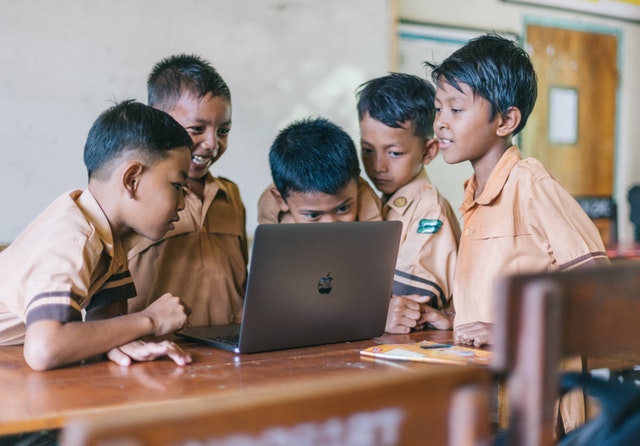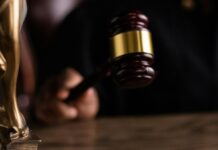
Key Change #1: Additional arsenal for rightsholders in the war against content piracy
New provisions will be introduced that impose both civil and criminal liability on persons who deal with illicit media streaming devices, such as set-top boxes, or provide related services. Whilst the current Copyright Act contains provisions which may potentially be relied on to enjoin such activities, there are some difficulties with applying the same given that they had not been introduced with these activities in mind.
- Under the current Copyright Act, it is copyright infringement to, among other things, make a copy of a work or film without the authorisation copyright owner.
Additionally, it is an offence to:
- Deal commercially (e.g., by manufacturing, importing, distributing or selling) with an article which is an infringing copy of a copyrighted work (an “infringing article”)
- Deal with an infringing article to such an extent as to affect prejudicially the copyright owner, whether for commercial or non-commercial purposes
- Make or possess an article which is specially designed or adapted to be used for making infringing copies of a copyrighted work: section 136(4)
- Do a copyright infringing act wilfully where the extent of the infringement is significant or the act is done to obtain a commercial advantage: section 136(3A).
This provision was introduced in 2004 to combat online piracy.
Illicit set-top boxes are not caught by the offences which criminalise dealing with infringing articles, given that they do not contain any infringing content at the point-of-sale. Whilst sections 136(3A) and 136(4) have been successfully invoked against a seller of a set-top box and its director, the court’s decision was pursuant to a guilty plea by the respondents so that the judge did not have the opportunity to hear and consider full arguments. If the position is scrutinised, there are conceivably arguments that the provisions do not apply.
Under the Bill, it is both copyright infringement and an offence to:
- Make, deal in or import, for commercial purposes, a device (including a component or a computer program) that is capable of facilitating access to an unauthorised copy of a copyrighted work, or distribute such a device to the extent that it will prejudicially affect the copyright owner; or
- Offer or provide a service – either together with the sale of a device or in exchange for payment – that is capable of facilitating access to an unauthorised copy of a copyrighted work. “Service” includes a subscription service and provision of information (e.g., website links or instructions for configuring the device to provide access to unauthorised content).
In all cases, the alleged infringer must know or ought reasonably to know that (i) the device or service is capable of facilitating access to unauthorised content, and (ii) has only a limited commercially significant purpose or use other than that capability. This knowledge requirement is to prevent persons who deal with multi-purpose devices such as mobile phones and computers – which can be used to access unauthorised content but also have perfectly legitimately uses – from being inadvertently caught by the provisions. Where a device is advertised as allowing users to access copyrighted content and such access has not be authorised by the rightsholders, this can go toward the showing of at least constructive knowledge on the seller’s part.
These provisions complement the existing mechanism for rightsholders to apply for site-blocking orders for internet service providers to deny access by their subscribers in Singapore to flagrantly infringing online locations. Site-blocking orders can be obtained against electronic programme guide servers and authentication servers which facilitate access to unauthorised content via apps installed on illicit set-top boxes. For set-top boxes that are already in consumers’ homes, this will have to be the main prong of attack.
Key Change #2: Additional revenue streams for sound recording companies
The exclusive rights of owners of copyright in sound recordings will be expanded and such rightsholders will have, in certain circumstances, a new right to equitable remuneration when their recordings are broadcasted or publicly performed.
Currently, for sound recordings, the copyright owner has the exclusive right, subject to certain exceptions, to: (i) make a copy of the recording; (ii) enter into a commercial rental arrangement in respect of the recording; (iii) publish the recording, if unpublished; and (iv) make the recording available to the public by means or as part of a “digital audio transmission”, which is defined to mean transmission of the recording in digital or other non-analogue form (e.g., over the Internet).
The right under limb (iv) will be expanded to include all forms of communicating the recording to the public. “Communicate” is defined to mean to transmit a work by electronic means, including broadcasting the work, including it in a cable programme, and making it available in a way that may be accessed by any person on demand. Accordingly, the copyright owner will also have the right to control dissemination of the recording by means other than digital audio transmission, including analogue transmission and broadcasting.
However, communicating a sound recording by the following means is not an infringement of copyright in the recording, subject, in some instances, to the requirement to pay equitable remuneration to the copyright owner:
- an analogue transmission;
- an analogue broadcast;
- a digital transmission (that is not a broadcast) that is not part of an interactive service (broadly speaking, a service which enables an individual to receive specific content upon request or content that is curated specifically for him); or
- a digital broadcast that is not part of an interactive service.
Additionally, there is also a right to receive equitable remuneration when the recording is caused to be heard in public.
In practical terms, this means that there may be no right to restrain the above-mentioned activities as long as equitable renumeration is paid. However, the right to receive remuneration for these additional activities translates into a potential new revenue stream for sound recording companies. The amount of equitable remuneration to be paid is to be agreed between the parties or, in default of an agreement, decided by the Copyright Tribunal.
Notably, an owner of copyright in a sound recording has no right to restrain the playing of the recording in public. That is not to say, however, that any song or tune may be publicly performed without permission, subject only to the payment of equitable remuneration to the owner of copyright in the sound recording. The underlying literary or musical work in a song or tune is separately protected, and permission of the relevant rightsowners will be required for dealings with these works.
Key Change #3: Employers to be the default owners of copyright in sound recordings and films created by employees in the course of employment
Currently, if an employee creates any sound recording or film, he will be the default copyright owner. If the employer wishes to own the copyright, it will have to procure an assignment from the employee, either as part of the employment contract or under a separate assignment agreement.
Under the Bill, employers will be the default owners of copyright in sound recordings and films that are created by their employees in the course of employment. The change aligns the position for sound recordings and films with that for authorial works. The new provisions will only apply to works created pursuant to contracts made after enactment of the Bill.
With this upcoming change, companies may wish to review their existing employment contracts and templates to see if any changes are required. If the contracts or templates are silent on copyright ownership, the rights will belong to the employer by default. However, if any contract or template states or suggests that the employee is the copyright owner, this should be amended immediately. This is because the default rules can be modified by contract. If necessary, existing employees who hired to, or expected to, create such works can be required to sign a fresh employment contract.
Key Change #4: Schools to be permitted to use material available on the Internet for educational purposes
A new exception will be introduced which permits not-for-profit educational institutions, including their staff and students, to do certain acts for “educational purposes” without having to pay compensation to the copyright owner. The publishing industry is likely to be the most impacted by this change. However, as the exception will apply to all types of works – including all authorial works (literary, dramatic, musical and artistic works), sound recordings, films, broadcasts and cable programmes, other sectors in the media industry should also be aware of the change.
This exception is said to be necessary in view of how teaching and learning methods and styles have evolved over the years, and given the increasing focus on e-learning, student-directed learning and peer-to-peer learning. As such, it has become necessary for teachers and students to use materials beyond standard textbooks.
The permitted acts include: (i) reproducing; (ii) communicating on a network operated or controlled by the school and accessible only by staff and students (e.g., an intranet); and (iii) adapting, works or recordings of performances; and (iv) recording a performance ‘live’. “Educational purposes” is non-exhaustively defined to include collaborative research, acts done for purposes of teaching or study, and organising or participating in an exhibition or competition (whether within our outside of the educational institution). As such, it appears that the exception will be quite broadly applicable.
The exception is subject to the following conditions:
- the work, recording or performance (collectively, “works”) must have been accessed using the Internet and, at the time it was accessed, must have been generally accessible by the public free-of-charge using the Internet;
- the user must cite Internet source and the date on which it was accessed;
- if the work made available on the Internet source was an unauthorised copy, the user must not know this. If the user is subsequently notified of this fact, it must stop using the work and take reasonable steps to prevent further access of the same; and
- provided that the information is available from the Internet source, both the title of the work and its author must be identified (unless the author is unknown or has agreed not to be acknowledged).
The only way to prevent materials which have been published online from being caught by the exception is to ensure that it is not generally accessible by the public free-of-charge. The provision sets out a number of illustrations of when this would not be the case, including where the work (a) is accessible only for a limited period that cannot be renewed or extended (e.g., under a free one-time trial subscription); (b) is accessible only by circumventing any technology that controls access to the work (e.g., password protection mechanisms); and (c) is only accessible under a paid subscription, even if not all users of the subscription paid for it (e.g., where a free subscription is bundled with another product or service).
Other Changes
In addition to the above changes, some other changes that the Bill will bring about include:
- Giving creators and performers a new right to be identified
- Making creators of certain works (photographs, portraits, engravings, sound recordings and films) the default copyright owner
- Introducing a new exception to copyright infringement for use of works for computational data analysis
- Stipulating that certain exceptions cannot be excluded or modified by contract
- Re-categorising the “fair use” exception
- Limiting the duration of copyright protection for unpublished works
- Introducing new exceptions or amendments to existing exceptions pertaining to galleries, libraries, archives and museums, print-disabled users and official government registers
The first four changes above were discussed in our previous article. If you wish to obtain more information on any of the provisions discussed in this article or our previous article, or any other provisions in the Bill, please feel free to reach out to us.









